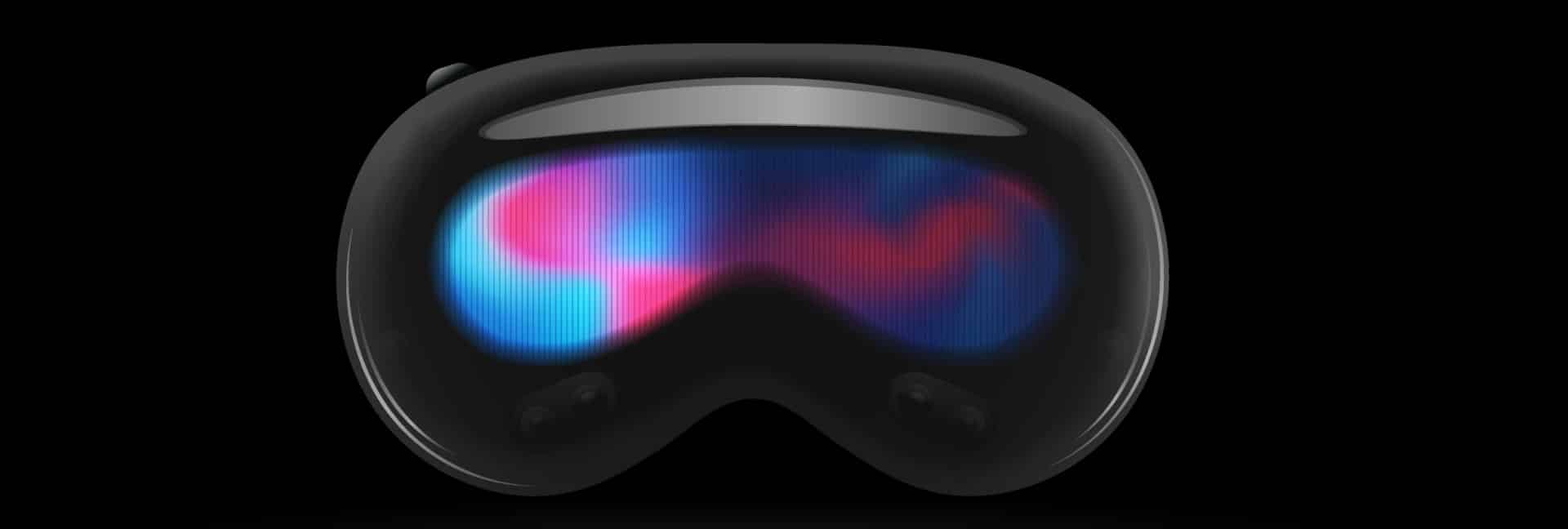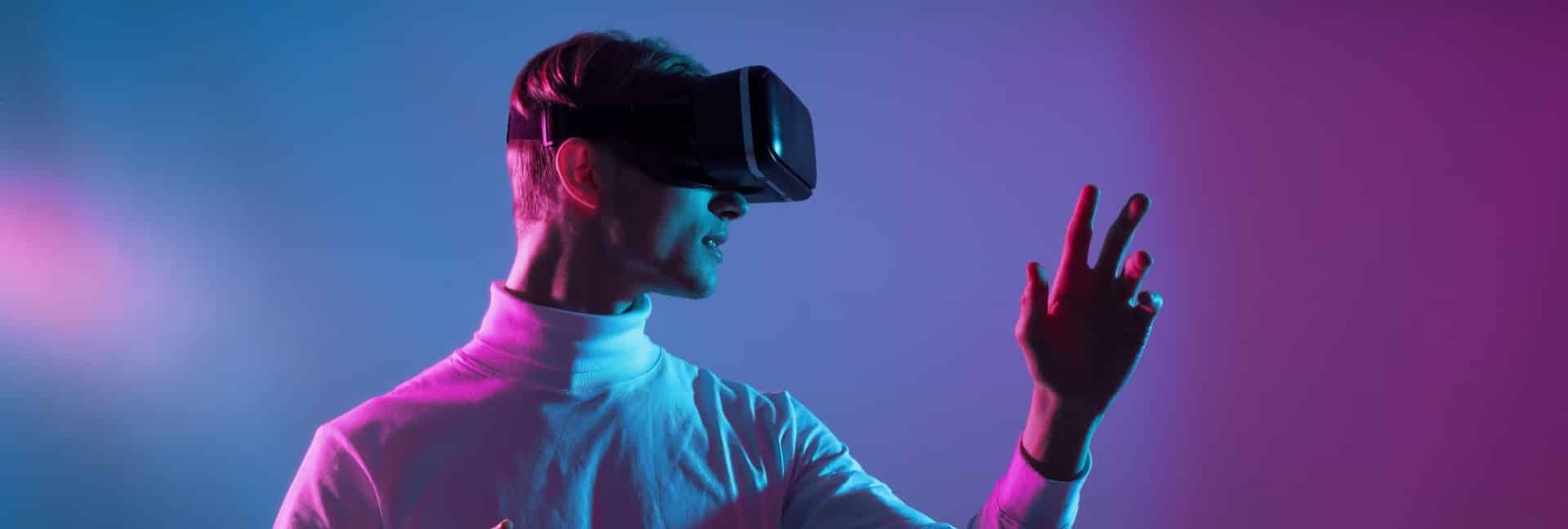At the Worldwide Developers Conference held in June, Apple officially announced the launch details of the mixed-reality headset it’s been working on behind the scenes for the last eight years.
Due for release in the US in early 2024, the Apple Vision Pro will be launched in other markets later that year. With a price tag of $3,499, the headset will undoubtedly attract the most serious Apple fans and VR users. But the question remains whether this device will sink or swim.
Now that the tech world knows more about the device, its specs, and Apple’s vision, there are mixed opinions about how well it will perform. Is the Apple Vision Pro a revolutionary headset that will change how we view XR? Or is Apple bringing too little, too late?
Here’s what we know about the Apple Vision Pro and what the XR industry says about it.
Apple Vision Pro Hardware
In terms of hardware, the Apple Vision Pro consists of a laminated glass display with an aluminium frame, five sensors, six microphones, and 12 cameras.
Users experience the XR worlds via two postage stamp-sized, 23-megapixel OLED displays. LEDs and infrared cameras provide eye tracking. If you wear glasses, custom inserts can be attached magnetically to the main lens. These have been developed alongside Carl Zeiss AG.
Inside the adjustable headband, there are speakers. These sit directly over the ears and can provide virtual surround sound.
The Apple M2 system powers the headset alongside an Apple R1 co-processor. The R1 delivers real-time sensor input processing.
Power is delivered via an external power supply, a battery pack, or using a Mac’s USB-C port. When using the battery pack, you can expect two hours of use.
During the device setup, you will develop a “persona”. This is a life-like avatar generated using facial scans.
The Apple Vision Pro features a dial that allows you to control the amount of virtual background you’ll see. You can move between a mixed-reality experience, where elements appear overlaid onto your real-world view, to a completely digital reality.
An outward-facing display known as EyeSight shows the persona’s eyes. When using augmented reality, your eyes will appear dimmed. In full VR, your eyes will be hidden. This let those around you know how much awareness you have of the real world.
Unlike virtually every other VR headset that’s come before, the Apple Vision Pro does not use controllers.
Apple Vision Pro Software
The new headset will run visionOS. Referred to as xrOS by Apple staff, the operating system uses a 3D interface which can be controlled by speech recognition, finger tracking, and eye tracking. Apps can be moved around the 3D space, and there’s a virtual keyboard. You can also use Siri or various external Bluetooth devices like a Magic Trackpad or Magic Keyboard.
When it launches, Apple says that hundreds of thousands of popular iPhone and iPad apps will work with the headset as well as over 1000 Apple games, and software, including Microsoft 365, Zoom, Teams, Webex, Adobe Lightroom, and more.
Buying an Apple Vision Pro
While UK buyers are unlikely to get hold of their headset until late 2024, anyone looking to own a headset in the US won’t just be able to pick one up from the shelf at their local Apple Store. Instead, buyers will need to book an appointment and get measured up. If you wear glasses, you’ll need to provide your prescription before getting your headset.
Initially, the only way to buy a headset will be from the Apple Store; however, third-party sellers will also stock the device from 2025.
How Has the Apple Vision Pro Been Received?
We’re several months away from the US launch of the Apple Vision Pro, but competitors and tech insiders are already eagerly scrutinising the new device.
The High Price
The biggest criticism is the price tag. The Vision Pro has some pricey tech onboard, including its cameras and sensors, the dual Apple processors, and tiny 4K OLED displays. While they might provide a premium experience, it remains to be seen whether many consumers will spend several times the price of a Quest.
There are reports that Apple is already working on two additional headsets. First, a less-expensive model set for a 2025 or 2026 release, and then a second-generation headset with improved processor speeds.
No Controllers
Elsewhere, the headset has drawn criticism for the lack of controllers. While feedback on the hand and eye tracking is that the device is intuitive, the lack of controllers is a concern for gamers who need the great accuracy they usually deliver.
Some critics speculate that Apple is intentionally moving towards a seated gaming experience to prevent motion sickness. Motion sickness is a problem that’s caused issues for XR developers and gamers alike. As Apple obviously has no new solutions for this, it’s probably not an experience that matches their brand.
No Fitness
So far, there is no indication that the Vision Pro will connect to the Apple Watch. VR fitness already has big appeal; however, as yet, no fitness apps have been announced with the exception of a meditation app that involves sitting still.
No iPhone Integration
The iPhone has undoubtedly been one of Apple’s biggest hits. With 1.6 billion uses worldwide, you would expect that the Vision Pro would link up. Currently, there’s no direct interface between the headset and the iPhone and iPad, and the Vision Pro can only work as a monitor extender for Macs.
No Haptics
Without a controller, there’s no haptic feedback. Maybe it’s something that users have come to expect from their VR tech, but Apple has decided to forgo this— at least for now.
When Microsoft created the HoloLens, there were no haptics, just hand tracking; however, this was on the company’s roadmap for the future. It’s entirely possible that Apple could bring out controllers with haptics at a later date.
Meta’s Reaction
Following the anticipated unveiling of the Apple headset, Mark Zuckerberg has shared his thoughts on the device with his team. In a company-wide meeting, he said that Apple’s Vision Pro provided no “magical solutions” to the issues Meta’s developers had already explored.
He went on to say that there’s a “philosophical difference” between Meta and Apple’s XR visions. According to Zuckerberg, Meta headsets are “fundamentally social”, available at affordable prices, and focus on “being active”, while Apple’s headset is “a person sitting on a couch by themself”.
While he admitted that Apple’s approach may be the future of computing, he went on to say that it’s not the one he wants.
What Are Apple’s Forecasted Sales?
Since announcing the Vision Pro, Apple has scaled back its production targets. Luxshare is manufacturing the headset. Currently, Luxshare is set to make less than 400,000 units in 2023. Elsewhere, there are indications that two of Apple’s component suppliers in China only have the parts to make 150,000 headsets in year one.
Previously, it was believed that Apple was hoping to sell one million headsets in the first year.
Will Apple Dominate Mixed Reality?
The question that’s been on everyone’s lips for a while is whether Apple will bring anything new to VR and whether they’ll create a product that mobilises mass interest in the technology. So far, Apple is gearing the Vision Pro up as a standalone computer that doesn’t need to interface with anything else.
There will be a long wait for the Apple Vision Pro, and over the next year, a lot could change. Watch this space for updates.







